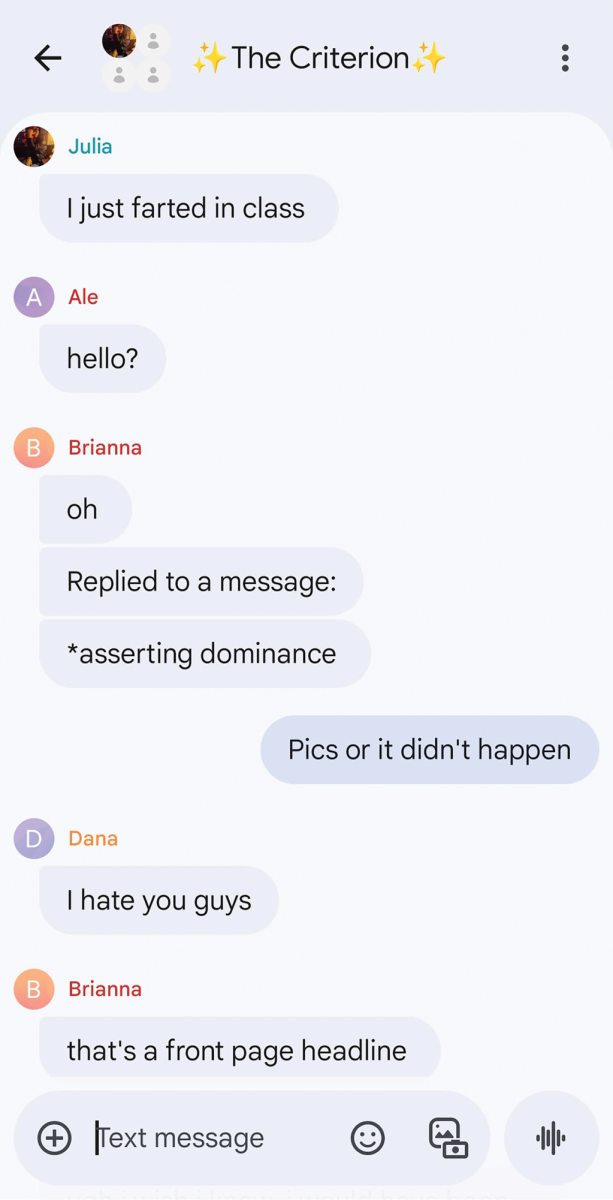The Colorado Mesa University theatre department’s production of Rogers and Hammerstein’s “A Grand Night for Singing” opened Sept. 28, the first of their main stage plays.
The “concept musical” is a peculiar choice; though it’s not a Rodgers and Hammerstein’s traditional musical, as Director Jeremy Franklin reminds audience members in his program note, it gains its cohesion through thematic links in songs from a selection of their work. Instead of containing a defined plot and characters, the musical follows a vague topical trajectory related to romantic love.
[media-credit id=100 align=”alignleft” width=”300″] [/media-credit]
[/media-credit]
The five cast members each boast a strong voice, as both ensemble and solo performances were overall precise and enjoyable. Brooklyn Buhre, Joe Castinado, Alyssa Gose, Kris Karns and Heidi Snider play themselves, but with such a loose “plot,” it doesn’t necessarily matter who they play. It’s difficult to watch this production and focus on anything but the songs and their passionate execution.
From a marketing perspective, especially to students, it may be helpful to think of this production as a non-traditional small ensemble concert instead of a play. A thematic plot was actually fairly easy to follow in the first act. In the second act, however, any cohesion seemed to disappear, especially with the “Parent Medley” that seemed thrown into the middle of other songs about romantic love.
For the most part, the songs themselves were performed well. Pitch issues were minor and if they occurred at all, they were resolved quickly. The only major issue with the songs came from a persistent microphone issue that plagued Karns through the entire first act. His microphone, which cut in and out, nearly ruined his solo parts of “Maria,” through no fault of his own.
Though the technical difficulty was fixed by the second act, it still left nearly an hour of songs during which his microphone was unreliable. The difference in the group ensemble songs in the second act after it was fixed was noticeable, as the songs sounded fuller and more complete now that his harmony part could be consistently heard.
Some of the highlights of the show were Buhre and Gose’s “Stepsister’s Lament,” a whining and upbeat response to the song before; Castinado and Karns’ “Maria,” in which the two male cast members took on The Sound of Music song originally sung by a chorus of older nuns; the female-only “I’m Gonna Wash That Man Right Out-a My Hair,” arguably the most empowering moment for women in the musical; the ensemble’s closing number “Impossible/I Have Dreamed” and the ensemble featuring Castinado in “Honey Bun,” the show’s most upbeat number.
Despite the claim by Franklin and cast members that the songs still felt contemporary, which allowed their production to explore love in the 21st century, the show still felt dated. The songs aren’t simply set to Golden Age music, but to Golden Age ideas as well. In the majority of songs, men pursue women, men can (and should) play around until marriage ties them down in “The Man I Used To Be,” women are prized for bodily beauty and literally objectified in “Honey Bun” and the both the songs and their representations allude only to heterosexual love.
These criticisms do not mean that the songs themselves were not fun and enjoyable, or that they inherently shouldn’t be performed. Rather they just lock the musical into a certain time period which it seemed unable to shake off. Some efforts were made to rectify the outdated language or attitudes, such as Gose’s comment in the middle of “Honey Bun” when a man uses the word “broad” to refer to her.
“Is he allowed to say that?” she asks, to which Karns replies, “Well, it is Grand Junction.” While funny, the comment does indirectly (and likely inadvertently) address the cultural divide between the university and its students, and the local community that makes up their audience.
For the most part, the jokes and comments in between the songs did little to further illuminate the theme or clarify the plot. They seemed more like a pacing device, or a breath for the actors, who, constantly singing and dancing, likely appreciated the break. However, because there was so little dialogue in the show, it had greater emphasis than it would in a normal show and therefore needed to be especially strong. Instead, these speaking breaks often came across as more distracting than not.
With so little dialogue or action to rely upon, the performance could have easily gotten stale, but the performers were constantly moving. While the dancing was not especially refined, the cast members always appeared to be having fun, which made the songs more enjoyable than they would have been otherwise. Gose demonstrated a remarkable ability to scamper across the stage—and sometimes nearly run—in her high heels, never once looking off-balance.
Though possibly upstaged by the performers, the musicians in the small ensemble orchestra that accompanied the songs deserve equal, if not greater, praise. Accompanying vocalists is a difficult task, and these musicians never once seemed off the beat or lost. Especially impressive was Nathan Wilson, who played clarinet, flute and saxophone during the performance. If the singers hardly got breaks, the musicians received even less, either constantly playing or switching between instruments as Wilson did.
Though the theatre seemed barely a third full on opening night, the musical deserves more attention than it was given. Perhaps dated and certainly not something the typical student might go to, the show nonetheless was fun, upbeat and enjoyable. “A Grand Night for Singing” runs until Oct. 7, giving students who have not yet attended a chance to listen to a well-executed and overall fun performance.









